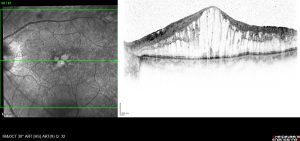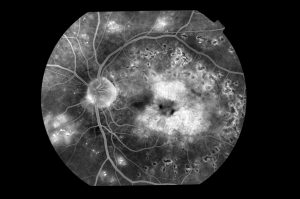Diabetic Macular Edema- Risk Factors and Treatment Options
What is Diabetic Macular Edema (DME)?
Diabetic Macular Edema is a medical condition that can occur in people who have diabetes. In this condition, fluid builds up in a specific part of your eye called the “macula.” The macula is vital for our sharp vision, which we use for reading, driving, and recognizing faces. When fluid accumulates in this area, it can cause your vision to become blurry or wavy.
Why is it important?
The onset of DME can significantly reduce the quality of life. Activities that require keen vision like reading, driving, or even navigating through your home become challenging. If not managed properly, it can lead to permanent vision loss.
What Causes DME?
The main culprit behind DME is diabetes—both Type 1 and Type 2. In diabetes, high blood sugar levels can damage the small blood vessels in your eyes. These damaged vessels can leak fluid into the retina, leading to DME.
Risk Factors
– Poorly Managed Diabetes: If your blood sugar levels are not well-controlled, your risk increases.
– Duration of Diabetes: The longer you’ve had diabetes, the higher the risk.
– High Blood Pressure: This can exacerbate the problem.
– High Cholesterol Levels: Like high blood pressure, high cholesterol can also aggravate DME.
How is DME Diagnosed?
Early detection is crucial for effectively managing DME. Regular eye examinations are essential, especially if you have diabetes. Some of the diagnostic tests may include:
– Visual Acuity Test: A standard eye chart test that measures your vision.
– Dilated Eye Exam: Drops are placed in your eyes to widen, or dilate, the pupils, allowing the doctor to see more of the inside of your eyes.
– Optical Coherence Tomography (OCT): A non-invasive imaging test that takes detailed cross-sectional pictures of the retina.

OCT scan of extensive diabetic macular edema

FFA showing diabetic macular edema
Treatment Options for DME
1. Medication Injections
– Anti-VEGF Therapy: Drugs like Avastin, Lucentis, and Eylea can be injected into the eye to block a specific protein that causes the blood vessels to leak.
– Steroid Implants: For some people, steroid medications can help. These are implanted into the eye and slowly release medication over time.
2.Laser Therapy
Focal/grid laser therapy can be used to slow the leakage of fluid, treating the swollen areas of the retina.
3. Surgery
A surgical procedure known as a “vitrectomy” may be recommended in severe cases.
Living with DME
Managing DME is a long-term commitment that will likely involve regular visits to an eye specialist. Lifestyle changes like maintaining a balanced diet and keeping your blood sugar levels in check are vital. Consult your healthcare team for a tailored treatment plan.
Conclusion
Diabetic Macular Edema is a significant concern for people with diabetes. Understanding the risk factors and available treatment options can make a huge difference in your quality of life. Regular eye check-ups and early diagnosis are crucial for effective management.
If you have further questions or need more in-depth information, consult your healthcare provider for personalized advice.
We hope this guide has been helpful in explaining Diabetic Macular Edema in a straightforward manner. Thank you for taking the time to read and educate yourself about this important eye condition.
Disclaimer: This information is intended for general educational purposes and should not be considered as medical advice. Always consult with a qualified healthcare professional for diagnosis and treatment.



